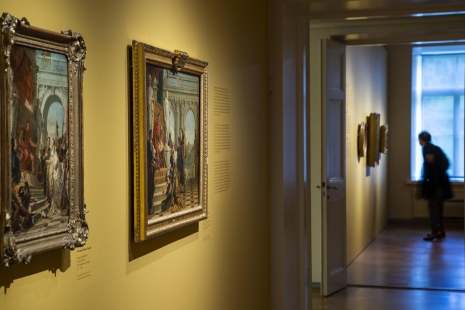Carl Linnaeus (Råshult 1707–1778 Uppsala)
Linnaeus’s breakthrough work Systema Naturae was published in Leiden in 1735. It presented his new classification system, which elevated him to international fame. This system grouped animals, plants and minerals into classes, orders, genera and species, and gave each a scientific Latin name. Over time, the large-scale first foil print of Systema Naturae was followed by numerous new editions that expanded from the original 14 pages to hefty opuses.
The garden as a living textbook
Botany formed part of medicinal studies during Linnaeus’s time, so in 1741 he became Professor of Medicine at Uppsala University. He also took over the city’s botanical garden. Planting was arranged in the symmetrical central part of the garden according to the new classification system that had been presented in Systema Naturae, and the garden served as a living textbook for educational purposes. The order and symbolism inherent in the symmetrically arranged garden also emphasized the beauty of God’s creative work. In Finland, Turku Academy built a new larger garden in 1759 under the direction of Linnaeus’s apprentice Pehr Kalm (1716–1779). It was modelled on Uppsala University’s botanical garden.
Plants and flowers as pictorial motifs
Plants in the garden, and especially flowers, have received much more attention in the visual arts than the garden itself. They are among the earliest and most important pictorial subjects. The tradition of creating images of plants extends from ornamental representations and symbolic meanings to detailed floral portraits. Towards the end of 16th century the floral still life became an independent pictorial subject.
The representation of flowers or insects in such paintings generally kept pace with scientific descriptions, but the floral composition is always a new combination. Painting is able to do what nature cannot – still life flower bouquets could combineflowers that bloom in completely different seasons.
The garden as pastime
Floral portraits in florilegia were also used as models in design and craft works. Intricate embroidery and other handicrafts were considered a suitable pastime for women, whose sphere also traditionally included the house and garden. Anna Sinebrychoff was also an avid gardener, and she participated in the founding of the Finnish Horticultural Association in 1875. Palm trees, roses and other flowers that were raised in the Sinebrychoffs’ greenhouses adorned the garden and the finest rooms in their home.





